Many people are familiar with this situation: In the office, some computers are still outdated and no one cares about new and more modern equipment. The larger a company is, the more difficult it becomes for IT departments to keep track of obsolete devices. In which cost centers are productivity slowdowns to be found? Which ones are defective or causing problems? Uniform IT lifecycle management makes everyday life easier for administrators and saves real money at the same time. IT lifecycle management refers to the complete lifecycle of IT hardware.
The process begins with the acquisition (i.e. purchasing) of the hardware and ends with the proper disposal and, if necessary, data erasure. Especially in large companies, transparency and a comprehensive overview of the IT inventory are often lacking without well thought-out asset management (synonymous with IT lifecycle management). The same applies to software: Which applications are actually used and which licenses belong to which device? It gets even more complicated when multiple locations are involved. Today, good IT lifecycle management is one of the central functions of an IT department.
5 Reasons Why a Thoroughly Updated It Lifecycle Management Is Worthwhile for Companies
1. you save a lot of time and resources
With IT asset management, companies achieve the most efficient ROI from the use of IT assets. At the same time, the total cost of ownership (TCO) is reduced. If the IT lifecycle management software includes an ordering portal, significant time savings can already be realized at the time of acquisition. Thanks to optimal adaptation to the respective company, the previously defined software and hardware components are already available in asset management at fixed prices and can be configured and ordered with just a few clicks.
2. you maintain an overview of your IT infrastructure
Today, spreadsheets are among the most commonly used methods for tracking enterprise IT infrastructure. However, these are not long correct, complete and meaningful. How many PC systems do we actually own? Where are they located, who has what equipment? When should obsolete equipment be replaced? This is difficult to document with Excel – easy with customized IT lifecycle management.
3. you create homogeneous and standardized IT environments
Like a tidy workshop, each tool has a central function in the IT landscape. A homogeneous software and hardware landscape lowers costs, reduces complexity and cuts maintenance costs enormously. But with the decisive edge of a standardized IT landscape, productivity increases not only in IT, but throughout the entire company.
4. sustainable reduction of maintenance costs
As soon as the IT landscape in the company is properly documented, the maintenance effort for each individual device automatically decreases. Software updates, hardware replacements or troubleshooting can be scheduled and performed more efficiently without interrupting the employee. At the same time, IT departments no longer have to support different solution scenarios for different hardware manufacturers, but can often fall back on solution approaches already applied in the past in the event of a problem. In other words, “We’ve had the same problem before with another colleague.”
5. efficient use
Efficient use of available software assets and optimal economic utilization According to a Gartner-Studie, many companies can leverage software costs by up to 30% through best practices. In the process, the use of software licenses is made more transparent and optimized through IT lifecycle management. The larger a company is, the more complex the manual optimization of licenses becomes.
Conclusion:
Where is a replacement due soon, which workstation is causing problems and which license belongs to which PC? IT asset management is a data-intensive process. With the right tool, the procurement, acquisition, categorization, management through to the replacement of hardware and software is greatly simplified and uncomplicated. With integrated vendor catalogs and catalog items, a homogeneous IT landscape is already created for your employees when they order their IT workstations, and inventories are neatly documented. We would be happy to show you our IT lifecycle management software “Workplace Enterprise” in a live demonstration.


